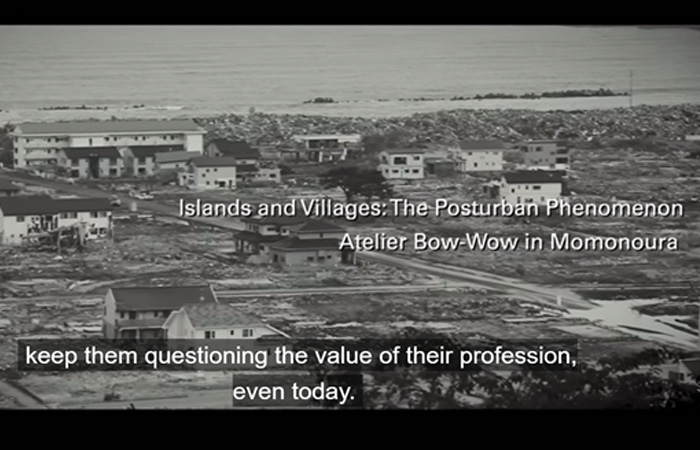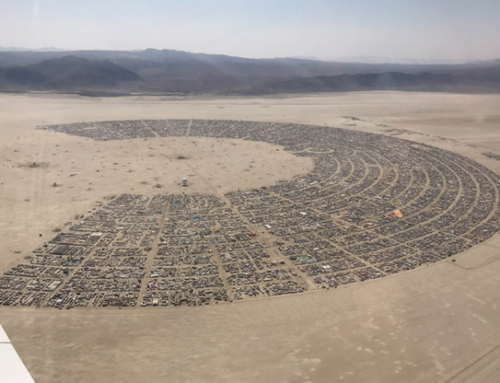To begin my first blog post I would like to briefly revisit the topic of “responsive” or “interactive architecture.” As someone without a formal architectural education background, I will present the meaning of Interactive architecture, then give two examples based in Japan.
I found a Concordina University Masters Thesis particularly helpful– “Responsive Architecture — A Place Making Design strategy,” by Omar Al Faleh. His thesis positions interactive architecture outside of the designation of ‘building’ and rather as an apparatus “agnostic to physicality and function, and meant to overlay or co-exist within the built environment and can be of an immaterial form.”1 In effect, his thesis emphasizes the “interactions” between people and the environment that remains “unique to the perceiving body,” pushing us to think of the human in the building.2 This led me to further my own thinking in terms of the way buildings both physically and symbolically function and interact with the people accessing and using it.
Al Faleh’s thesis outlines that the interaction between architecture and people and bodies does not have to be attached to a physical machine or mechanism; rather, he emphasizes an intangible connection between places and people that make a space engaging to its audience. He pushes us to think about public spaces and the idea of designing them to engage with people in different ways. The argument that in doing so perhaps, it’s no longer about building infrastructures but about building tunnels to allow for meaningful connections to other places and locations.
Using Al Faleh’s thesis as a starting point, I would like to point our attention to a different context, and to suggest we think about responsive architecture as Al Faleh suggests — outside of the physical function but the ongoing co-existence and relationship within the built environment. The unique points of ‘contact’ between people and their environment that shapes what we build, see, and engage with in the context of the public space.
The Japanese experience after natural disasters is a good example of interactive architecture as discussed in this documentary series published by the CCA titled “islands and villages.”
“Islands and villages’
As a prelude to this post, it is important to remind ourselves of the specific context of Japan, and Japanese architecture especially, with regard to responses to natural disasters and its impact on urban development. In the aftermath of natural disasters, specifically the Tohoku Earthquake in 2011, architects in Japan were faced with a different set of challenges in order to rebuild entire towns and villages. The second video in this series — titled “Atelier BOW WOW in Momonoura” — explores the significant changes brought to the worlds of architecture and urban planning in the face of natural disasters which led to an institutional re-assessment of architecture and its role, specifically in the rural areas.
———————————-
[1] Omar Al Faleh, “Responsive Architecture — A Place Making Design strategy,” (MA Thesis, Concordia University, 2017), 14.
[2] Al Faleh, 15.
Architects Momoyo Kaijima and Yoshiharu Tsukamoto detail their time in Momonoura, during which Kajimia visits a small village every month in Tohoku, Momonoura, and in collaboration with villagers and other benefactors, embarks on rebuilding the area. Kaijima, alongside local villagers spearheaded a rebuilding project– co-designing several small structures in the village which” allowed for open exchange and skill sharing greater integration of modern life with the surrounding natural resources.”3
I was especially interested by the way in which architects not only “observed and identified how things work in space,” but linked it to the “culture and history” of Momonoura as it relates to peoples’ everyday lives.4 As demonstrated with the collaboration with local fishermen, this video highlights the important ways that architecture as a field also extends to forestry — once more, linking nature and architecture in unique ways. It is clear that the village and area itself is at the core of everything. Yoshiharu Tsukamoto states,
“We do things that aren’t really architecture. Not just designing buildings but doing presentations and surveys, [but] helping in the community, a lot of students were doing things other than architecture. […] No no , that is what we call architecture. Reading, learning, talking […] is a part of architecture, that is what we think.” 6
The video on their work in Momonoura highlights to me, how architectural efforts aim not simply to building something, but also as a public site of knowledge and learning in ways that allow people to meaningfully interact and engage with the surrounding environment. This work presents itself as a unique example of ‘interactive architecture’ because it pushes the public, those who will use, touch and see the buildings, to interact with architecture in significant ways. Importantly, as Tsukamoto states, ‘architecture’ can continue to be re-defined as to best accommodate different communities and residents.
Interactive architecture offers us new and unique ways of considering how our spaces can respond with our needs at both a smaller and larger scale. I hope that taking a closer look at the “Islands and Villages” series pushes readers to think more broadly about how the definition of interactive architecture can be relative to different contexts and needs.
———————————-
[3] “Islands and Villages; Atelier Bow-Wow in Momonoura,” Canadian Centre for Architecture, published May 25, 2018. https://www.youtube.com/watch?v=rjBBLHtHaqs&ab_channel=CCAchannel.
[4] “Atelier Bow-Wow in Momonoura,” 5:29.
[5] “Atelier Bow-Wow in Momonoura,” 6:05.
Works Cited:
Al Faleh, Omar. “Responsive Architecture — A Place Making Design strategy,” MA Thesis, Concordia University, 2017.
Canadian Centre for Architecture (CCA). “Islands and Villages.” Documentary series.
https://www.cca.qc.ca/en/articles/issues/26/what-about-the-provinces/56455/islands-and-villages
Canadian Centre for Architecture. “Islands and Villages; Atelier Bow-Wow in Momonoura.” Published May 25, 2018. https://www.youtube.com/watch?v=rjBBLHtHaqs&ab_channel=CCAchannel.



